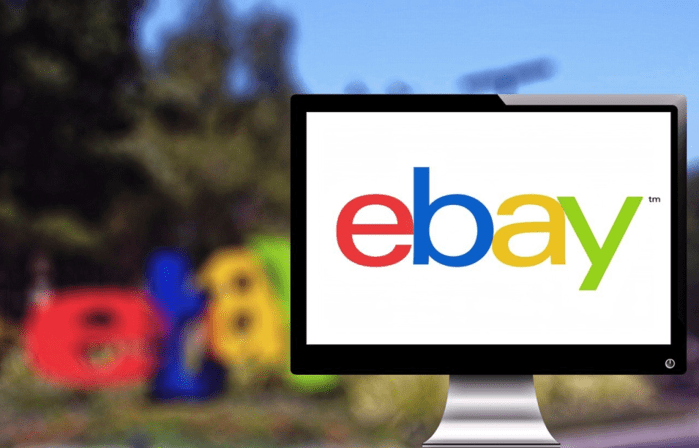
Source: pexels
Getting Started with eBay Product Sourcing
Imagine having an endless supply of hot-selling products that practically fly off the virtual shelves on eBay. Products that customers can’t get enough of, driving up your sales and profits to new heights. Sound too good to be true? It’s not – with the right product sourcing strategies, you can turn this dream into a reality.
Whether you’re a seasoned eBay pro or just starting, this comprehensive guide will keep you updated with the knowledge and tools to become a product sourcing ninja. From leveraging cutting-edge research techniques to exploring sourcing channels, you’ll discover more than one way to speed your eBay business.
What is eBay Product Sourcing?
eBay product sourcing involves the process of finding and acquiring items to sell on the eBay platform. This can include a variety of methods such as arbitrage, dropshipping, wholesale purchasing, retail clearance, and more.
Effective product sourcing is key to the success and profitability of an eBay business. By sourcing in-demand products at competitive prices, you can increase sales and attract more customers.
Get Familiar with the Platform
If you’re new to eBay, the first steps you’ll want to take involve getting to know the ins and outs of the marketplace dynamics, user demographics, and top-selling categories.
Understanding current statistics on eBay’s market share, user demographics, and top-selling categories can highlight sourcing opportunities.
For instance, analyzing top-selling items on eBay during 2024 can provide valuable insights into popular products that could be potential targets for sourcing.
Identify What to Sell before Sourcing
Using eBay’s search tools and filters
eBay offers robust search tools and filters that allow sellers to explore trending products within specific categories or niches. Leveraging these tools can help identify popular items with high demand.
Utilizing third-party research tools
In addition to eBay’s internal tools, third-party research platforms like Terapeak and Zik Analytics offer comprehensive market data and insights. These tools enable you to analyze sales trends, pricing strategies, and competition within your target niche.
Monitoring trends and consumer demand
Always keep an eye on the market trend through reliable sources such as trade publications or market research reports. This will help you make informed decisions about which products to source for your eBay business.
But understanding trends and consumer demand is just the beginning. True mastery of eBay product sourcing requires a multifaceted approach.
By understanding these foundational aspects of eBay product sourcing, aspiring sellers can lay a strong groundwork for their entrepreneurial endeavors.
Where to Find Products to Resell on Ebay
As an e-commerce seller, the process of sourcing products for eBay requires you to explore more techniques or platforms while meeting your customer demand.
Knowing where to source product for your ebay business is a vital factor in building a diverse and profitable inventory. Take a look at the table if you want to quickly know the pros and cons of the different methods sourcing products for your ebay stores:
| Method | Profit Margin | Control & Customization | Startup Costs | Inventory Management |
| Arbitrage & Dropshipping | Low-Medium | Low | Low | Not Required (Dropshipping) or Minimal (Arbitrage) |
| Wholesale and Private Label | Medium-High | High | Medium-High | Required |
| Retail Clearance & Online Directories | Variable | Low | High | Not Required |
Arbitrage and Dropshipping
Pros and Cons
Arbitrage and dropshipping are popular methods for sourcing products on eBay.
Pros:
eBay product sellers can benefit from arbitrage (buying from stores to resell) by capitalizing on price discrepancies between different marketplaces, buying low from one platform and selling high on eBay.
Dropshipping, on the other hand, allows sellers to list products without holding inventory, as items are shipped directly from suppliers to customers.
Cons:
While these methods offer flexibility and low initial investment, they may involve lower profit margins due to increased competition and potential logistical challenges.
How to Get Started
To begin with arbitrage, you can utilize platforms to make informed decisions about product selection based on real-world insights. Read the client reviews on every platform you can find to learn if the product would resonate best with your target audience. This approach provides tangible data that informs product selection strategies, ultimately contributing to a more effective sourcing guide for eBay.
For dropshipping, where you partner with suppliers to ship products directly to customers, it’s critical to find reliable, high-quality suppliers. Thoroughly vet potential partners, prioritizing prompt shipping and consistent product quality. Happy customers are the foundation for a strong reputation.
Wholesale and Private Label
Finding Suppliers
Wholesale purchasing offers eBay sellers the opportunity to buy products in bulk at discounted prices, allowing for competitive pricing on the platform. Identifying reputable wholesale suppliers through industry trade shows or online directories is essential for maintaining a consistent supply of sought-after products.
Private labeling involves working with manufacturers to create custom-branded products tailored to specific market demands. This approach requires thorough research into potential manufacturing partners who can deliver high-quality goods within specified timelines.
Negotiating Prices
When engaging with wholesalers or private label manufacturers, effective negotiation skills play a vital role in securing favorable pricing terms. It’s like a game of cat-and-mouse – you need to skillfully bargain to land deals that maximize your profits.
Building strong relationships with suppliers can lead to long-term benefits such as volume discounts or exclusive product lines.
Retail Clearance and Online Directories
Tips for Finding Deals
Retail clearance sales present opportunities for eBay sellers to acquire brand-name merchandise at significantly reduced prices.
Monitoring local retail outlets or online platforms like Facebook Marketplace can yield valuable clearance deals suitable for resale on eBay.
Leveraging Online Tools
Online supplier directories provide comprehensive listings of verified suppliers across various industries. Platforms such as Alibaba or Thomasnet enable sellers to explore a wide range of product categories.
By diversifying your ebay sourcing strategies through these methods, you can establish a robust inventory mix that caters to diverse consumer preferences while maximizing profitability.
What Are the Best eBay Product Sourcing Strategies

Now that you know how to source products on eBay, it’s time to implement a well-structured strategy to ensure efficient sourcing and inventory management.
Creating a Sourcing Plan
Setting Realistic Targets
Set realistic targets based on market research and available resources. Consider factors such as sales volume, profit margins, and seasonal demand fluctuations.
Achievable goals help you maintain a focused approach towards sourcing products that align with your ebay business objectives.
Scheduling and Logistics
Effective scheduling and logistics are integral components of a successful ebay sourcing plan.
Develop a structured timeline for product acquisition, taking into account lead times from suppliers and shipping durations. Additionally, consider the logistical aspects of inventory storage and distribution to ensure seamless operations.
Managing Your Inventory
Storage Solutions
Whether using a warehouse or shelving systems, prioritize smart storage practices. This streamlines operations and keeps things running efficiently.
Best Places to Source Inventory for eBay
Identifying the best places to source inventory involves ongoing exploration of diverse channels such as trade shows, online marketplaces, and direct supplier relationships.
Continuously evaluating new sourcing opportunities enables you to diversify your product offerings.
Scaling Your eBay Business
When to Expand Your Product Line
Knowing when to expand your product line is all about paying close attention to market trends and customer demands.
If you spot opportunities to offer more variety that fits what buyers want, that could be a good time to diversify your inventory and product selection.
The key is using data from market research and actual customer feedback to guide your decisions on expanding, rather than just guessing blindly. Let emerging trends and shopper preferences be your roadmap for smart product line growth.
Evaluating Potential Products
Before adding any new products, thoroughly evaluate them first. Look at factors like how much competition there is, the potential profit margins, and whether the product fits your brand’s identity.
Essentially, you want to make smart, informed choices instead of just randomly listing new products. Analyzing the market landscape, profit potential, and brand fit will help ensure you pick winners that align with your business goals.
Investing in Marketing
As you scale your eBay business, allocating resources towards strategic marketing initiatives becomes increasingly pivotal. Explore avenues such as targeted advertising campaigns, social media engagement, and search engine optimization (SEO) strategies to amplify your product visibility across the platform.
Consider Asian Group Sourcing

Asian Group Sourcing could be a potential avenue for acquiring products to sell on eBay. Here are some of the reasons why you should consider working with the company:
Why Choose Asian Group Sourcing?
Benefits and Challenges
Asian Group Sourcing presents distinct advantages, including access to a wide range of cost-effective manufacturing capabilities, diverse product offerings, and competitive pricing.
By collaborating with ASG suppliers, eBay sellers can tap into an extensive network of manufacturers specializing in various industries, enabling them to source innovative and in-demand products at competitive prices.
Success Stories
Numerous success stories within the e-commerce landscape highlight the transformative impact of embracing Asian Group Sourcing.
Sellers on ebay who have sourced products from ASG have reported significant enhancements in their product diversity, profit margins, and market competitiveness. These success stories underscore the potential for sustainable growth and profitability through strategic partnerships with Asian suppliers.
How to Work with Asian Group Sourcing
Cultural Considerations
Respectful communication, understanding local customs, and demonstrating cultural sensitivity are integral aspects of fostering strong partnerships. Embracing cultural diversity fosters mutual trust and paves the way for fruitful long-term collaborations.
Tips for eBay Product Sourcing 2024
As you navigate the dynamic landscape of eBay product sourcing, alway remember to embrace a mindset of continuous improvement and resilience.
Learning from mistakes and staying ahead of the curve are pivotal factors in achieving sustained success within the e-commerce realm.
Learning from Mistakes
Common Pitfalls to Avoid
One common pitfall for eBay sellers is overcommitting to a single sourcing method without diversifying their inventory acquisition strategies. Relying solely on one approach can limit product variety and leave sellers vulnerable to market fluctuations.
Additionally, neglecting thorough supplier vetting processes may lead to quality issues or shipping delays, impacting customer satisfaction.
How to Recover from Setbacks
Recovering from setbacks involves proactive problem-solving and adaptability. In the face of inventory management challenges or unexpected market shifts, eBay sellers can pivot by reassessing their sourcing strategies, seeking alternative suppliers, or exploring new product niches.
Keeping Up with eBay Trends
Regularly monitoring platform updates, consumer behavior shifts, and emerging product categories empowers you to align your sourcing efforts with current market demands.
Engage in industry-specific webinars, networking events, or educational resources to stay informed about best practices, technological advancements, and innovative sourcing methodologies.
By remaining receptive to new insights and adaptable to changing market dynamics, eBay sellers can position themselves as forward-thinking industry leaders.







-300x198.png)